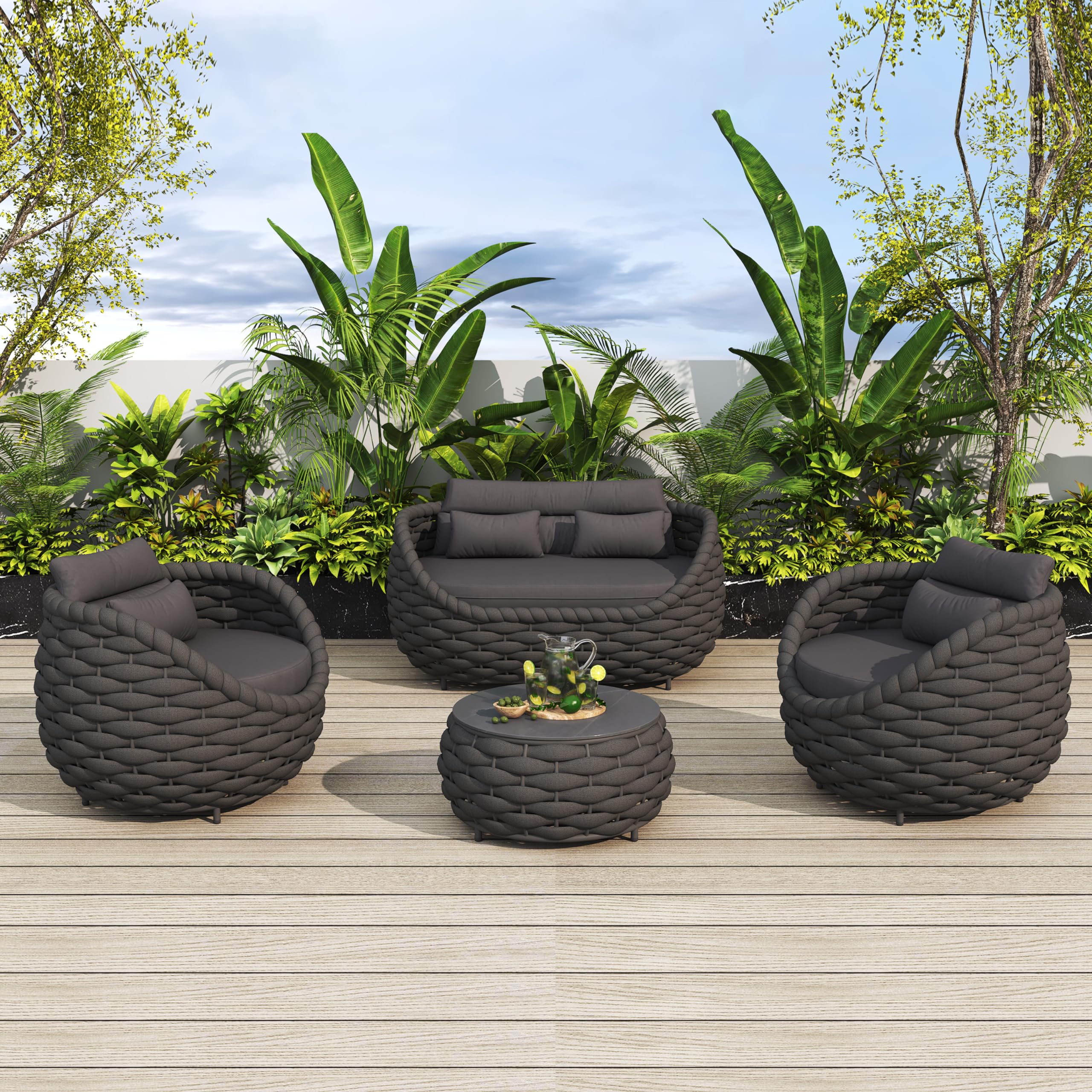As winter approaches, many homeowners face a dilemma: leave outdoor furniture outside under covers or store it indoors? This guide examines the risks, best practices, and material science behind protecting outdoor chairs, garden sofas, and other patio pieces during freezing months—without commercial bias.
1. Understanding Winter’s Impact on Outdoor Furniture
All outdoor furniture materials face unique challenges in cold climates:
Metal Frames (Aluminum/Wrought Iron)
- Risk: Repeated freeze-thaw cycles accelerate corrosion, even on powder-coated surfaces.
- Data: A 2022 ASTM International study found unprotected metal joints lose 25% structural integrity after one winter.
Wood (Teak/Cedar)*
- Risk: Snowmelt seeping into wood grain causes swelling, cracking, and mold.
- Science: Wood’s hygroscopic nature absorbs moisture until temperatures drop below -18°C, creating internal ice crystals.
**Synthetic Materials (PE Rattan/Resin)**
- Risk: UV exposure degrades polymers year-round, while extreme cold makes plastics brittle.
- Research: MIT’s Material Ageing Lab notes PE wicker loses 40% flexibility at -20°C.
2. The Covering Controversy: When Protection Works
Proper covering can extend outdoor furniture lifespan if these guidelines are followed:
Rule 1: Match Covers to Materials
- Metal garden chairs: Use waterproof covers with ventilation flaps (reduces condensation by 60%).
- Wooden outdoor sofas: Breathable canvas allows moisture escape while blocking snow.
- Plastic garden furniture: UV-resistant covers prevent “cold embrittlement.”
Rule 2: Elevation is Critical
- Place outdoor chairs on rubber feet or wooden pallets to:
- Prevent ground moisture absorption
- Reduce ice adhesion to legs
Rule 3: Pre-Winter Rituals
- Clean garden sofas with pH-neutral soap to remove acidic pollutants.
- Apply protective sealants (linseed oil for wood, carnauba wax for metals).
- Remove cushions—even covered fabric harbors moisture that breeds mildew.
3. When Covers Fail: High-Risk Scenarios
Covering alone cannot protect outdoor furniture in these conditions:
**Extreme Cold (-25°C or Below)**
- Metal becomes brittle: Aluminum’s tensile strength drops 30% at -29°C (ASM International data).
- Plasticizers in synthetic rattan lose elasticity permanently.
Heavy Snow Regions
- Snow load exceeding 20kg/m² (common in mountain areas) can deform frames.
- Drifting snow bypasses covers through gaps.
Coastal Winters
- Salt-laden air corrodes metals 8x faster than freshwater environments (NOAA research).
4. Pro Tips for Winter Warriors
For those committed to outdoor storage:
- Windproofing: Strap covers to garden chairs using bungee cords, not plastic clips (brittle in cold).
- Microclimate Monitoring: Place hygrometers under covers; >70% humidity requires intervention.
- Midwinter Checkups: Brush off snow accumulations every 3 weeks to prevent ice dams.
Conclusion: A Balanced Approach
While high-quality covers can protect outdoor furniture in mild winters (above -15°C), harsh climates demand indoor storage. Consider these factors:
- Material Limits: Check manufacturers’ temperature ratings.
- Local Climate: Historical snowfall/ice storm data for your ZIP code.
- Maintenance Commitment: Are you prepared for bi-monthly checks?
By aligning protection strategies with material science and local weather patterns, your garden sofa and outdoor chairs can emerge from winter ready for spring.
If you want to buy high quality outdoor furniture, please contact us:
wechat:+86 13302891839
WhatsApp:+86 13302891839
email:aliceyau.springrich@gmail.com
Post time: Feb-26-2025



